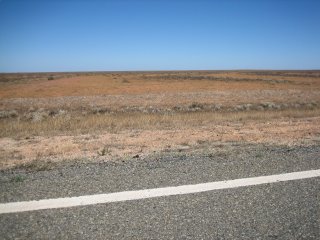This post is dedicated to the smaller arachnids that live in our community. Friendly critters such as the
white tip, the
red back, the
brown widow, and the
trapdoor spider none of which, despite urban legends to the contrary, are in fact 'deadly.'

First, the
white tail (also known as the white tip.) This much maligned spider has been suspected of causing necrotising wounds around the bite area. This means that the victim ends up with ulcerations and lesions around the bite area and, in the worst cases, advanced gangrene resulting in amputation. Recent evidence debates this and seems to point to this spider causing no worse than a very painful bite.
That said, it is only recently that I learned all of that through research. Everyone you meet here tells you how dangerous these spiders are and so far I've seen five of them (three in our house.) One actually crawled into my shorts that were lying on the floor. When I put them on, she crawled down my leg trying to escape. I freaked out because I thought I had narrowly escaped a horrible case of gangrene of the penis leading to the commencement of my career as Androgo-Damo. Turns out, from what 'the authorities say' I had nothing to worry about.
We ended up killing the white tip that you see in the picture anyway because we also learned that they prey solely upon other spiders which are generally good in that they eat all the other nasty bugs.

This little fellow lives just outside our back door and is a
trapdoor spider. Trapdoors also have also been the victim of a misleading media and urban legend blitz as they are often mistaken for the very deadly funnel web (the only truly deadly spider) and have been suspected of killing people in the past. The truth is that their bite, although very painful, causes no severe illness in humans.
They are nighttime spiders and hide during the day. I didnt even know this guy lived there until one night when I was sitting out back and happened to look to my right to see her poking her head out of her funnel home waiting for some misfortunate critter to crawl by. Since then I've been feeding her ants and moths, one such victim you see in the photo. She is super fast and darts out, grabs the victim, and carts it off to her home to be devoured in seconds flat. Glad I'm not a moth.

Last but not least are the 'widow' family of spiders including the
red back and the
brown widow. The former we have only seen in museums & zoos. The latter I almost put my hand into her web while cleaning our barbeque. I'm pretty sure it was a brown widow as it had the telltale leg patterns and a small white marking on its back. I missed being bit by about an inch and the widow's bite, while not as bad as the redback, is very painful and can cause illness.
I took the photo of the redback you see to the left in the Melbourne museum. She was alive and spinning a very intricate web. The redback can kill small children and will make an adult sick. Their bites are common since it lives in places where human contact is likely - such as urban areas, gardens, tool sheds, etc. So far we have not seen one in the wild.
In a later post I'll discuss two other spider types. One is very cool & unique - the huntsman - of which I've only seen one so far. The other is very scary and deadly - the sydney funnel web - which I have yet managed to avoid. Thank God.
For now I'll leave you with the deadliest spider we have come across to date - redbacks that have come into contact with radioactive waste and grow to massive size as a result. Nicole narrowly escaped with her life after I successfully beat it back with an oversized broom stick.


 capture the colours.
capture the colours.



























